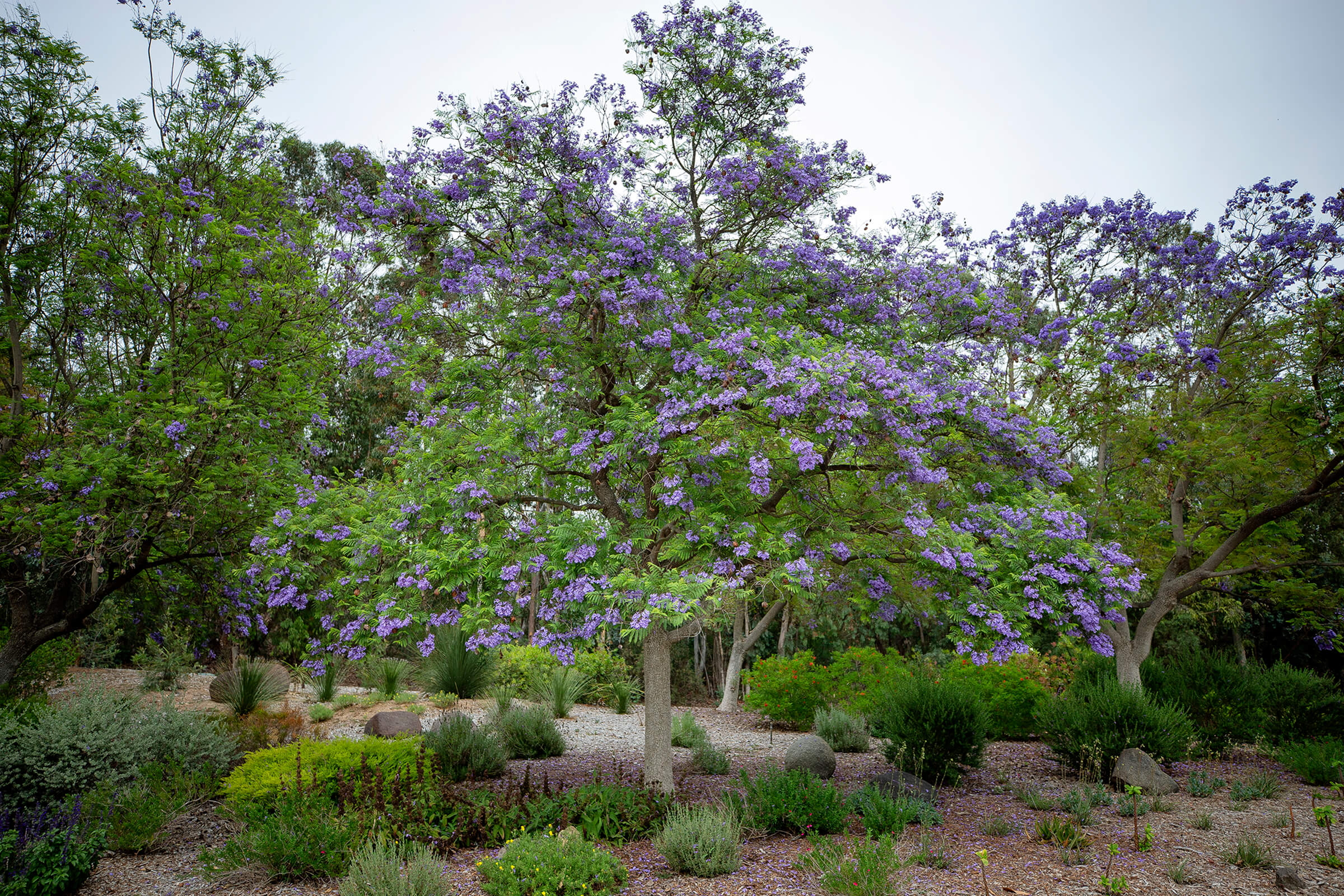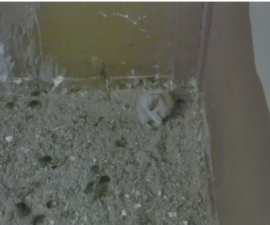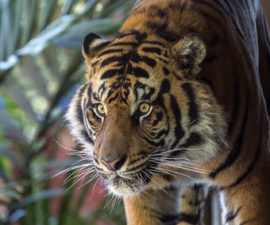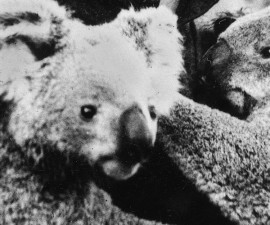In the heat of long summer days, we all welcome the shade of a spreading tree. A jacaranda tree goes a step further, treating us to a breathtaking spectacle of lavender-blue flowers. The blossoms cover the tree’s expansive canopy, and carpet the ground beneath the tree with color.
BY Donna Parham
Photography by Tammy Spratt
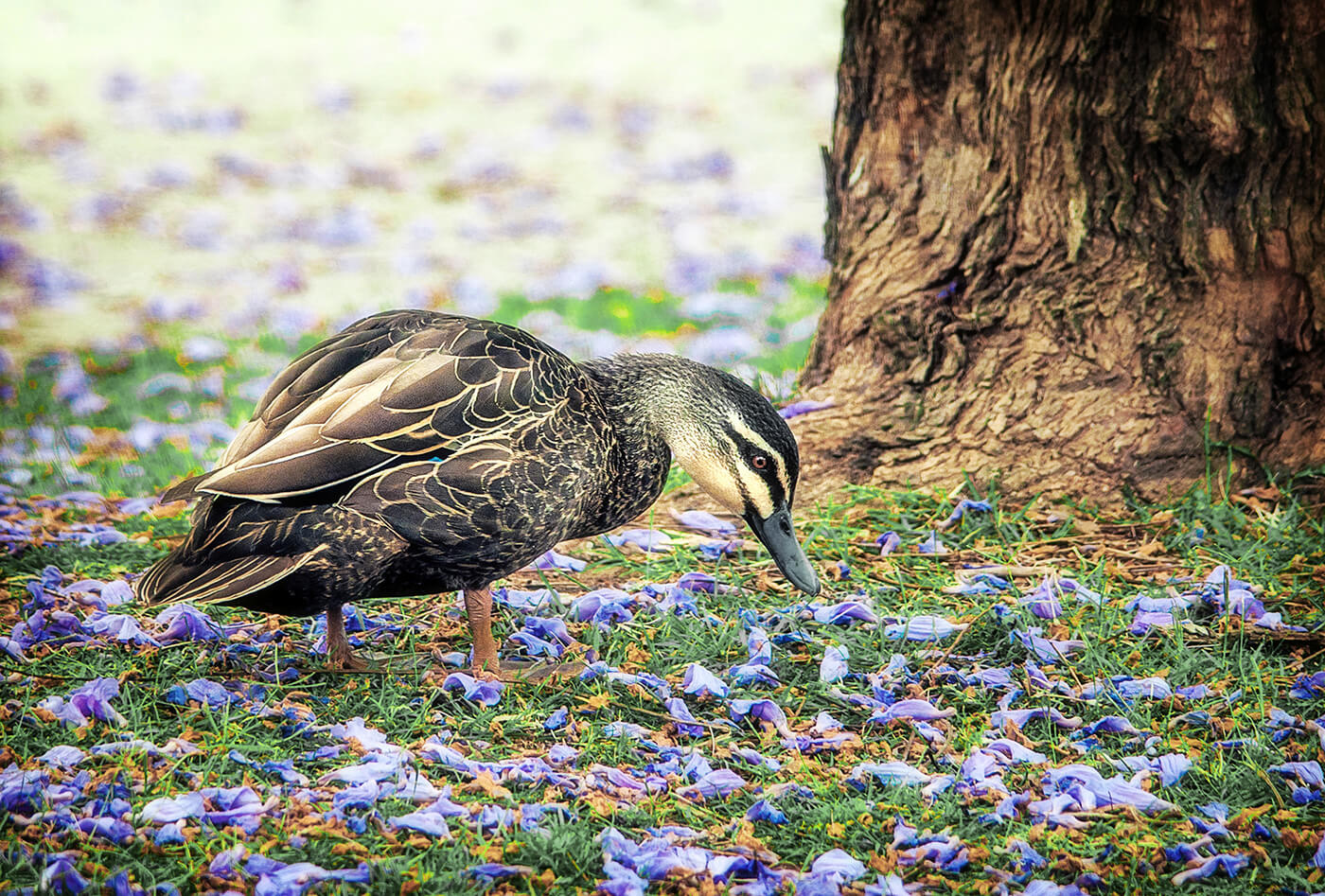
BLANKET OF FLOWERS
When a jacaranda’s flowers fall to the ground, they create a lavender-blue carpet beneath the tree. (Photo by tracielouise/iStoc /Getty Images Plus)
When Kerri Abrams, graphic design supervisor at San Diego Zoo Global, moved to San Diego, she noticed huge swaths of purple flowers layering the street. “I thought there had been a wedding,” she says. “Then, I started seeing the flowers on the ground all over the place.” At first, she was surprised by the number of weddings in her neighborhood. “And then, I realized they were coming from the trees,” she says, laughing.
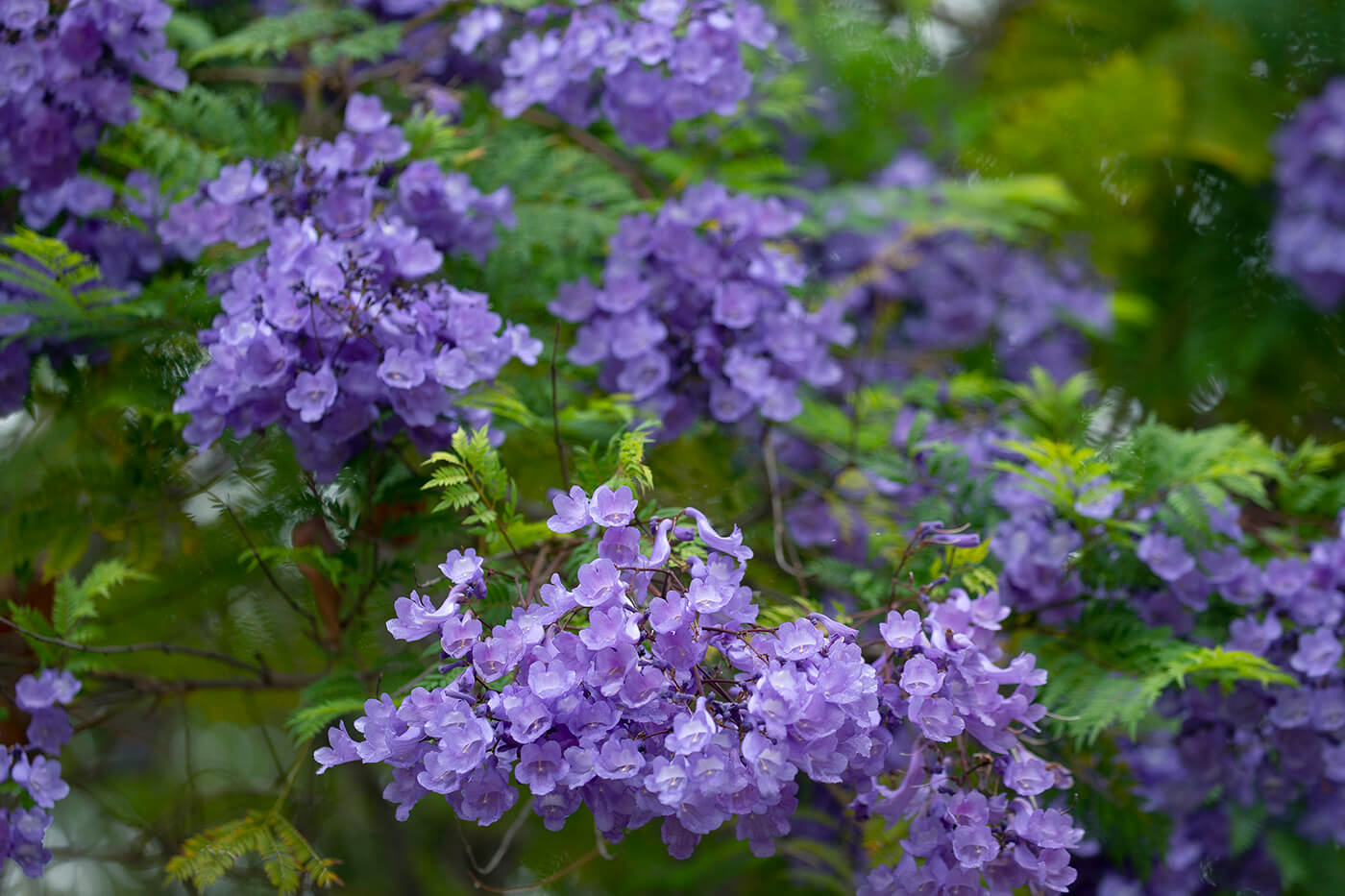
BOUNTIFUL BLOOMS
A jacaranda’s long, tubular flowers burst forth in foot-long clusters at the tip of every branch.
“They’re in full bloom in June,” says Adam Graves, director of horticulture at the San Diego Zoo. He notes that there are many jacaranda trees Jacaranda mimosifolia at the Zoo—including in Fern Canyon, at the Bus Tour loading area, and along the Front Plaza. “One of the reasons that many jacaranda trees were planted, throughout Fern Canyon specifically, was to help create a canopy of brilliant color that would be visible from flights coming in to the airport,” says Adam. “So in a sense, it’s our ‘Welcome to San Diego’ tree, for the months that it’s in bloom.”
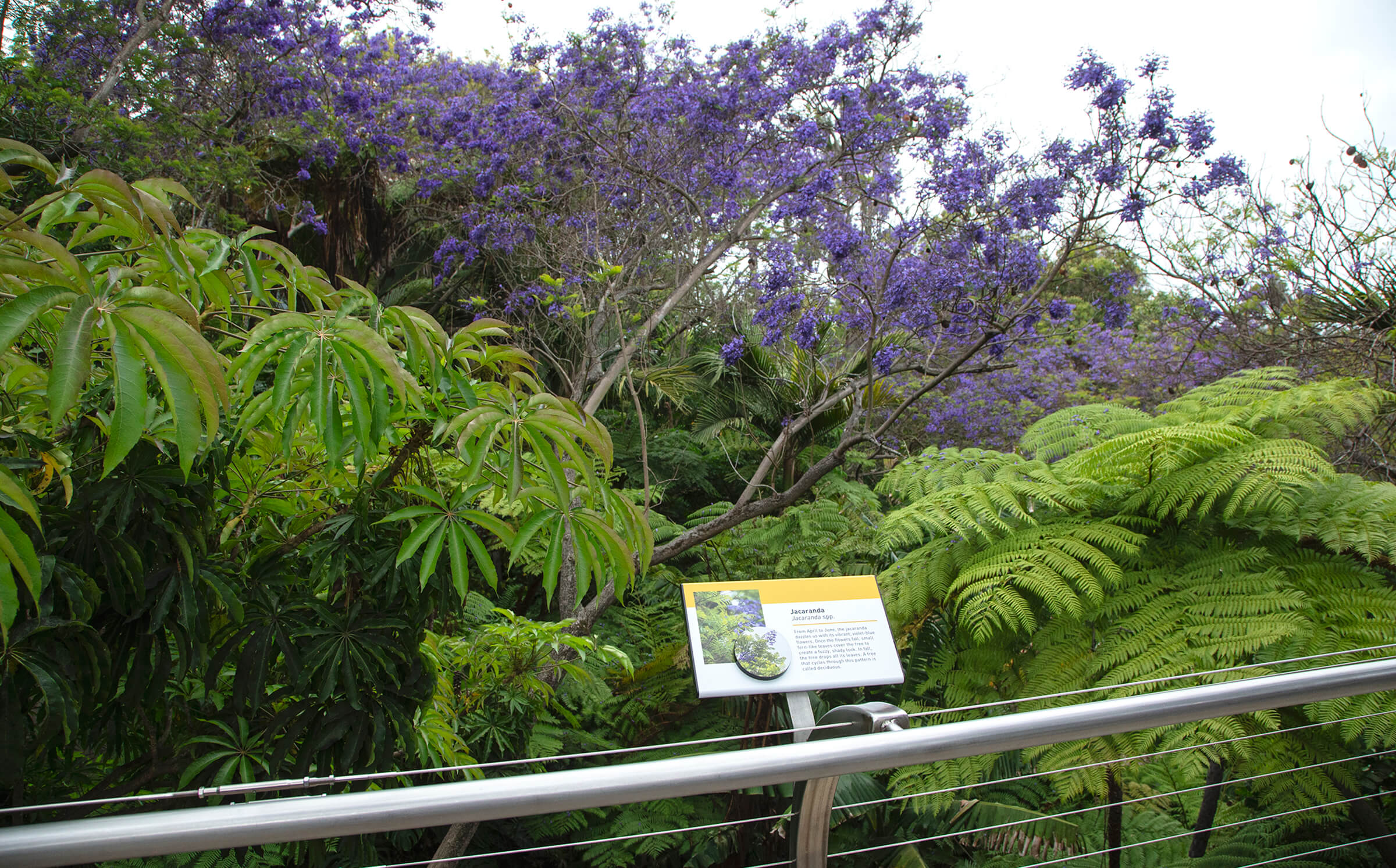
 The largest documented jacaranda tree is north of San Diego, in Santa Ana, California. It’s 58 feet high, 98 inches around the trunk, and more than 73 feet across the spread of the branches.
The largest documented jacaranda tree is north of San Diego, in Santa Ana, California. It’s 58 feet high, 98 inches around the trunk, and more than 73 feet across the spread of the branches.
A Flowery Flourish
In fact, the jacaranda is the official urban tree of the city of San Diego. (The official native tree is the Torrey pine). We can thank 19th-century San Diego horticulturist and landscape designer Kate Sessions for helping plant the jacaranda firmly in our hearts. After graduating from the University of California, Berkeley—one of the first women to do so—with a degree in natural science, she moved to San Diego. A short career as a teacher gave way to a lifetime of horticulture and landscaping that influences San Diego to this day.
In 1892, Kate Sessions leased 32 acres of land in an area then known as City Park (renamed Balboa Park in 1910) from the City of San Diego. As part of the lease agreement and in exchange for using the land as a commercial nursery, she agreed to plant 100 new trees per year in City Park and provide the city with another 300 trees for public landscaping. Nurtured by her green thumb, exotic palms and trees—including lots of jacarandas—soon flourished in the once-weedy City Park. Many of them are still standing, and they continue to provide shade and beauty throughout Balboa Park. In honor of her contributions, Kate Sessions has been called the “Mother of Balboa Park.”
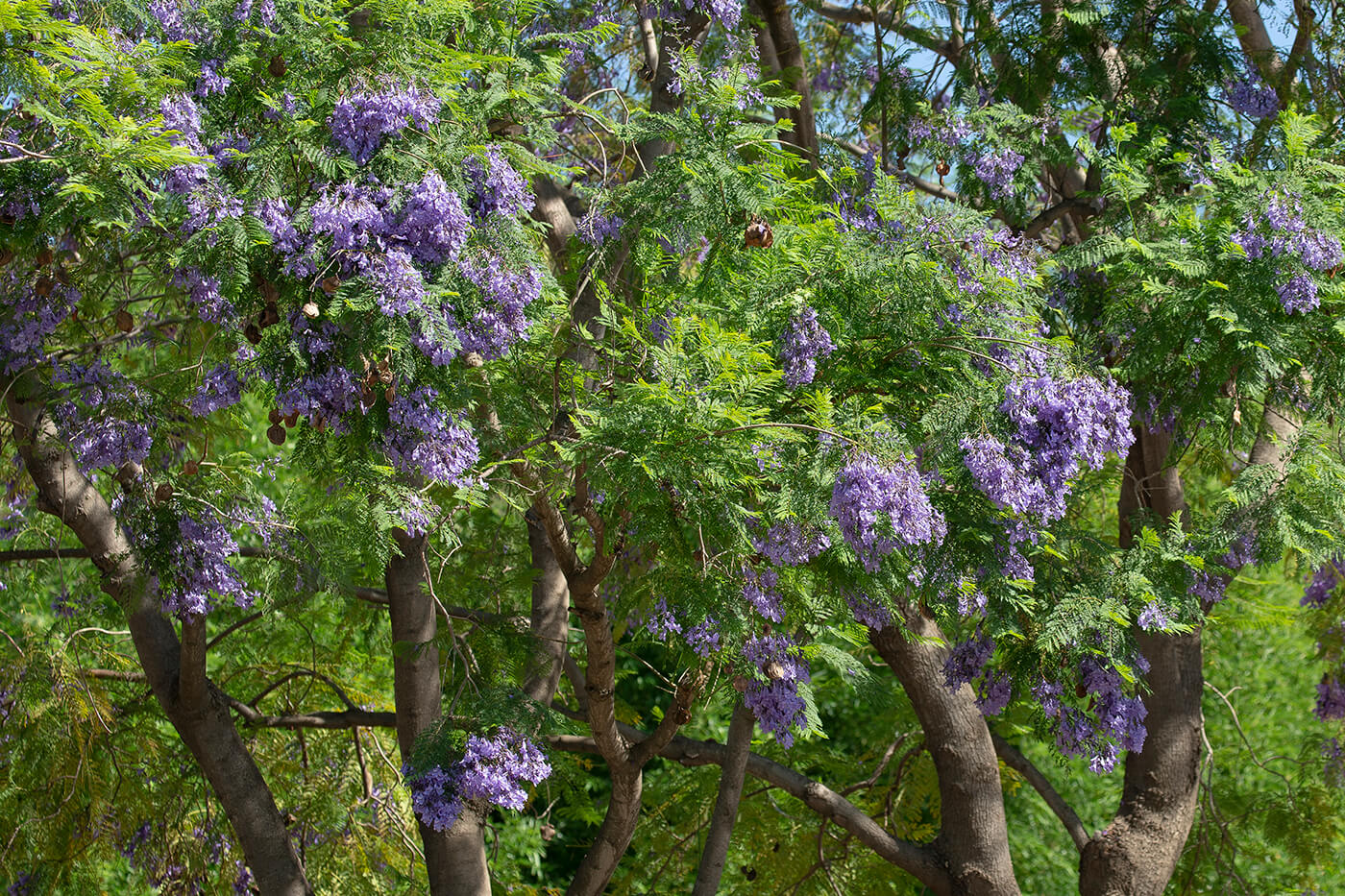
THANK YOU, KATE!
Jacarandas provide shade and beauty in Balboa Park, as well as other areas of San Diego. Many of them were planted 100 years ago by horticulturist Kate Sessions.
Visitors can find jacarandas throughout the Safari Park, too, with a particularly impressive stand of the trees in the guest parking area. “The Village Garden Club of La Jolla donated several jacarandas to the Safari Park some 20 or so years ago,” says Linda Post, horticulture manager at the Safari Park. Their donation included several white-flowering jacarandas J. mimosifolia ‘Alba’ (below). “White jacarandas are pretty rare, so it’s cool that we have some in our collection,” she says.
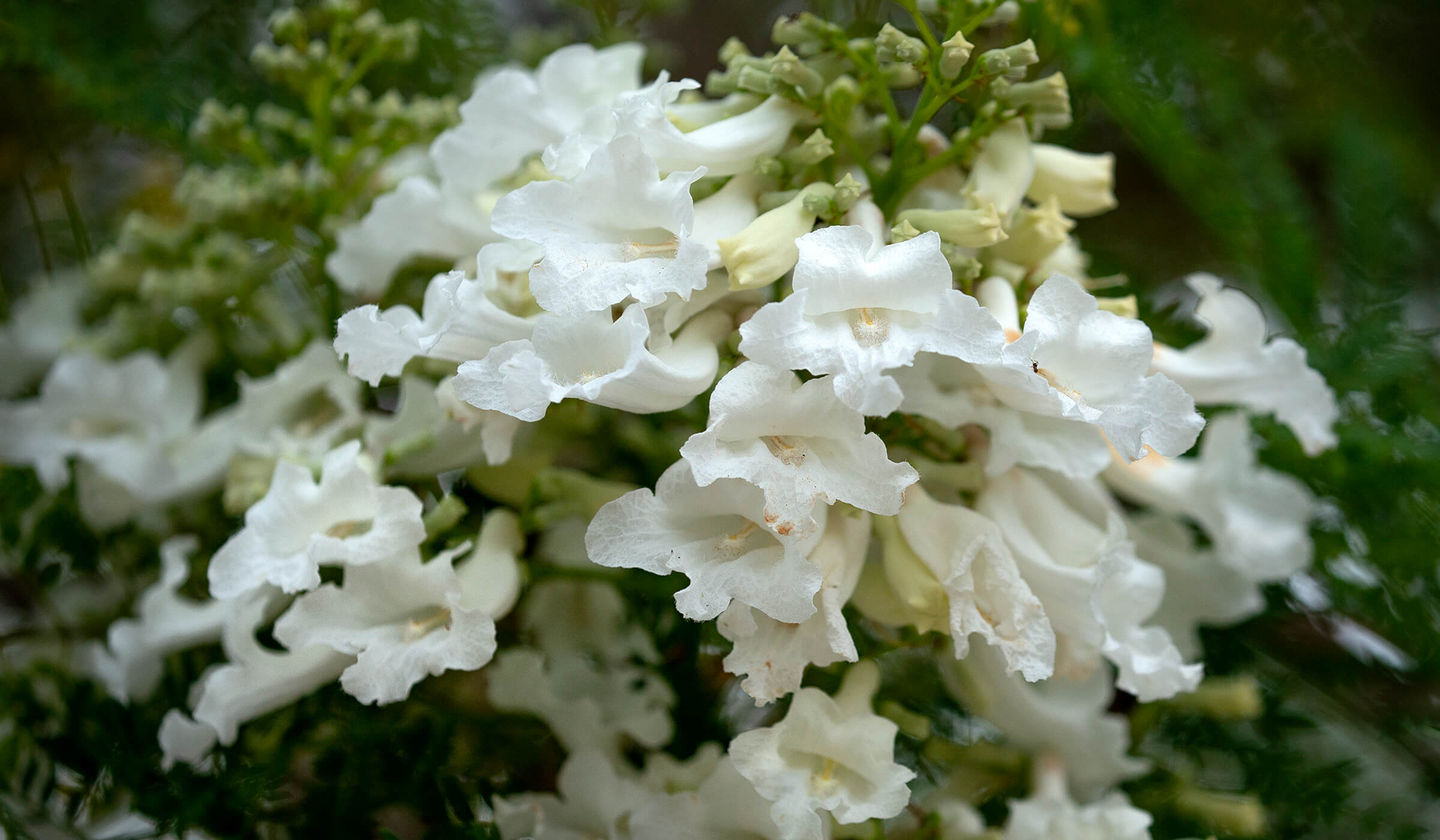
The Jacaranda’s Charms
Popular shade and street trees in Southern California, jacarandas do require ample space to grow—a mature tree can be 40 feet tall and 30 feet wide. Though they don’t tolerate extended periods of freezing temperatures, they are drought- and heat-tolerant. Planted in well-drained soil and full sun, a jacaranda will reward you with dappled shade and a show that begins in spring, when the leaves drop and inch-long, tubular flowers burst forth in foot-long clusters at the tips of every branch. The myriad blossoms provide an excellent nectar source for pollinators, luring bees and birds. Flowers last about eight weeks before falling to the ground. Of course, while some people love the purple-carpet effect of a jacaranda’s fallen blossoms, the sticky flower “litter” exasperates others.
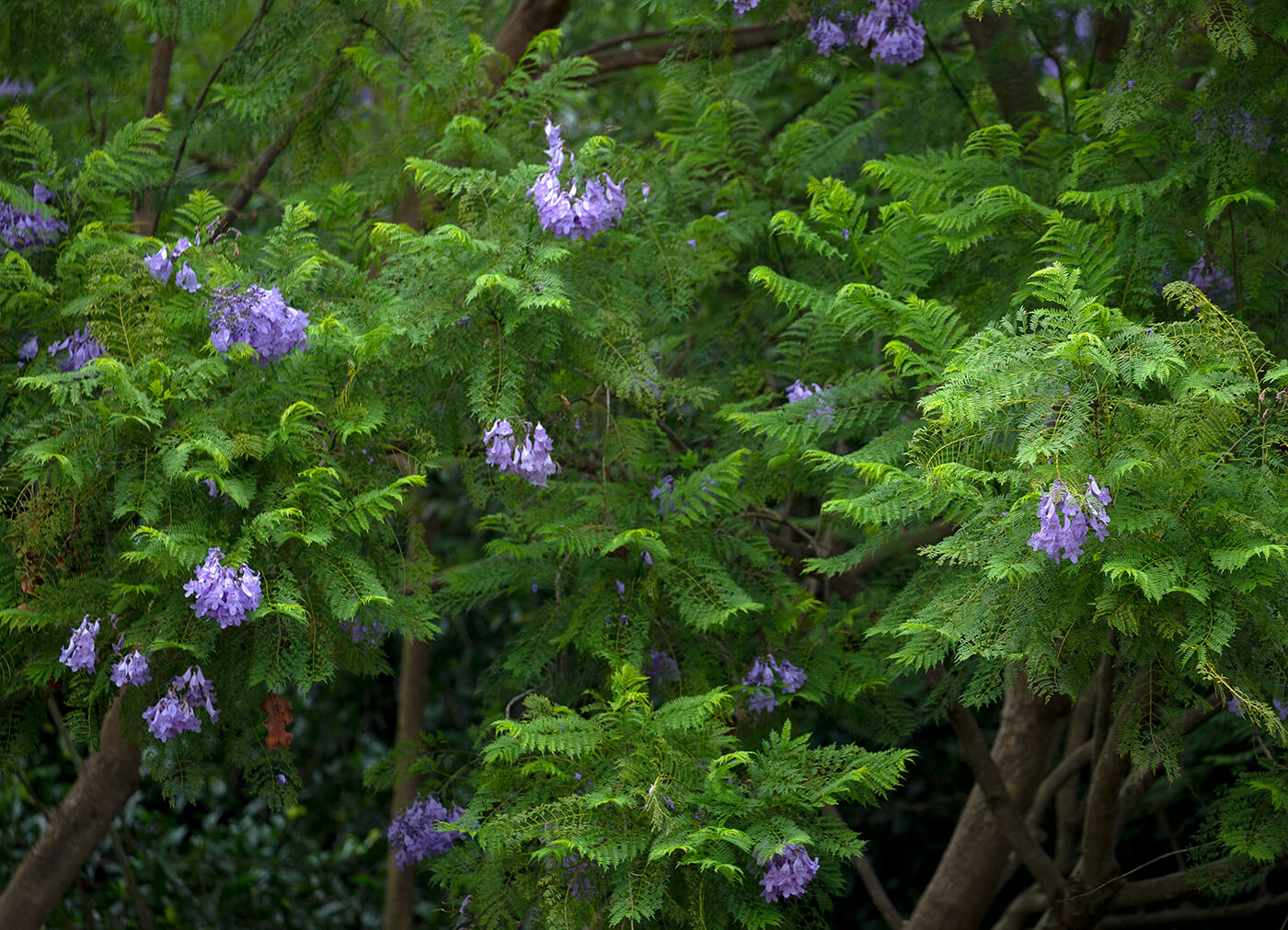
LACY LEAVES
Jacaranda leaves are “bipinnately compound.” That means that each leaf consists of 13 to 31 “pinnae” (divisions, or leaflets), and each pinnae consists of even smaller, elongated leaflets. On some college campuses, the earliest jacaranda blossoms are a sign that final exams are approaching, and a blooming jacaranda has been known to trigger stress in students who have not yet begun studying in earnest!
As the flowers fade, seeds develop in tough, flattened oval pods, and new leaves sprout. In some places too chilly for jacarandas to bloom, these trees are grown just for their delicate-looking, fernlike leaves: small leaflets are arranged in rows, one on each side of a leaf’s midrib, and each of those leaflets is further divided in the same fashion. As the lacy leaves grow, two-inch-long seedpods dry and turn brown on the tree. About a year later, the pods split open, rather like a little mouth. The papery, winged seeds inside flutter and spin as they are whisked away by the breeze.
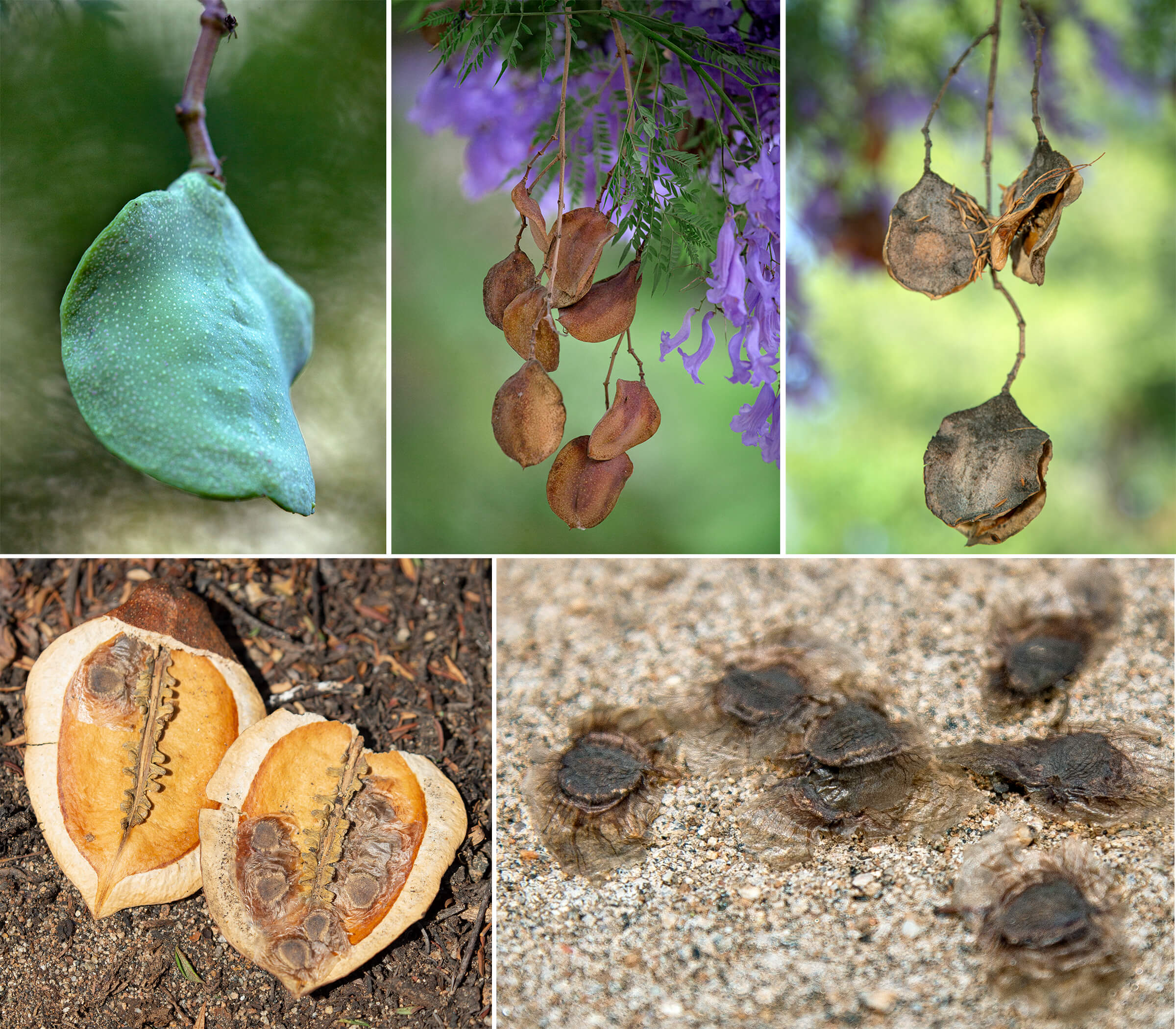
FUTURE TREES
Jacaranda seedpods stay on the tree for a year. They dry, turn brown, and eventually split open to release papery, winged seeds.
Good and Bad Sides
Though they have been planted as ornamental trees all over the world in places with mild climates, jacarandas are native to dry, subtropical mountain valleys of Argentina and Bolivia. Agriculture has taken over much of their native habitat, leading the International Union for Conservation of Nature (IUCN) to categorize this species as Vulnerable. On the other hand, the tree has naturalized in places far from its home, including the Hawaiian Islands. It is regarded as an invasive species in some areas because it outcompetes native plants. In South Africa, for example, trade in this species is prohibited, and planting a jacaranda requires special permission. The southern US, including San Diego, is a sort of “sweet spot” for jacarandas, where the exotic trees provide shade and treat us to an eye-popping floral display, without invading our native habitats.

